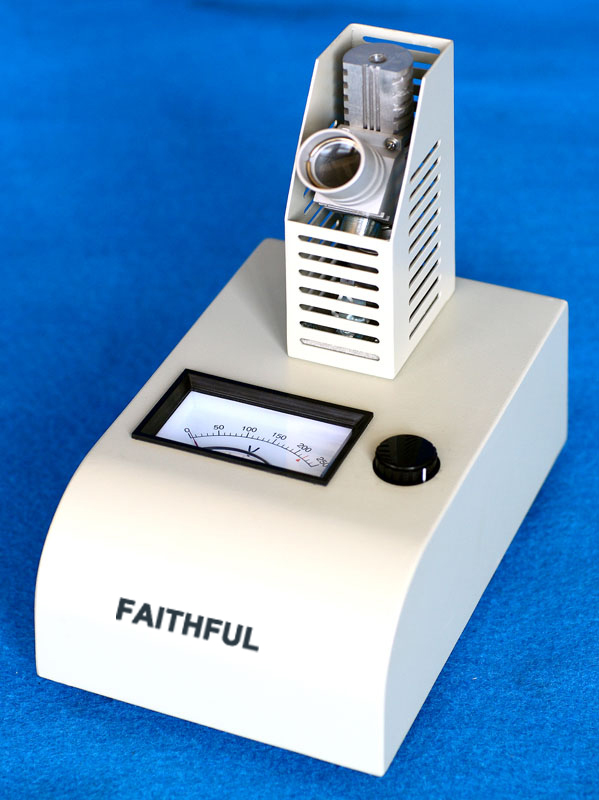

At a basic level, the machine is designed so that a capillary tube with the sample can be inserted into the device and rapidly heated to a set temperature. There are many different types of Melting Point Apparatus machines and they range in functionality and accuracy. This device uses the same concept of heating a sample in a capillary tube but makes the process far simpler and quicker. It is important to heat the sample slowly using this method so that a thermal equilibrium can be established.Ī more modern way of using the capillary method is to use a device called a Melting Point Apparatus. If you don’t have a heating bath, you can use Mineral Oil in a Thiele Tube and heat the tube with a Bunsen Burner. The capillary tube is then placed into a heating bath and the experiment is conducted. The concept involves placing a small amount of the substance in a capillary tube and joining this to a thermometer.
#MELTING POINT MEASURE MANUAL#
The first is a manual apparatus set up with the aim of heating up a sample inside a capillary tube whilst visually looking for when the sample has melted. There are a few ways in which you can set up an experiment with the capillary method. This method involves placing the sample in a capillary tube and running an experiment that will heat the sample until it reaches melting point. The most common and most basic method of determination is the capillary method. There are a variety of methods that you can use to determine the melting point of a sample. A melting range is a difference between the temperature at which the sample begins to melt and the temperature at which the sample has actually melted. This is due to most samples appear to melt over a small temperature range. When measuring a melting point, you will generally find that it is recorded as a melting range rather than the exact melting point.


It is used to identify a sample, establish its purity, and determine the thermal stability of the sample. If the two samples are different, the melting point will be depressed.The determination of a melting point of a sample is a standard laboratory procedure and is relatively straightforward. If the unknown sample is identical to the known sample, the melting point will remain unchanged. Determine the melting point of the mixture.Grind them together using a mortar and pestle or a fire polished glass stirring rod and then fill a capillary tube with the mixture. Make a homogeneous mixture of equal amounts of the unknown and the known substances. When a satisfactory melting point range has been determined, choose a known substance that has a melting point within 5☌ of the observed value.Record the temperature at which the solid in the capillary tube melts.Use the bunsen burner to heat the mineral oil slowly.The thermometer with a capillary tube attached using rubber tubing Insert the thermometer through a hole in a cork, and clamp the cork to the ring stand as shown.įigure 5.Place a sample of the compound into a capillary tube and use a thin piece of rubber tubing as a rubber band to attach the capillary tube to a thermometer (see Figure 5).Place a beaker of mineral oil on the wire gauze.Set up a ring stand with a bunsen burner (which should be attached to a gas valve using rubber tubing), a ring above it, and wire gauze on the ring (see Figure 4).This time, make sure that the increase in temperature is no more than 2oC per minute. Once a melting point range is determined, prepare another capillary tube (tubes should only be used once and then discarded) and set the MEL-TEMP to the appropriate power level, based on the power level/temperature chart.Observe the melting process though the magnifying lens. Set the MEL-TEMP at a high enough level to make a rapid determination of melting point. Place the capillary tube in the MEL-TEMP melting point apparatus.Force the crystals to slide to the bottom of the tube using one of the following methods: tap the tube (open end up) on the lab bench drop the capillary tube through a 2-3 foot piece of glass tubing or rub the capillary tube along a piece of wire gauze.

Put the capillary tube (open end down) into the crystals and tap it on the bottom of the crystallization dish to get the crystals into the tube.


 0 kommentar(er)
0 kommentar(er)
